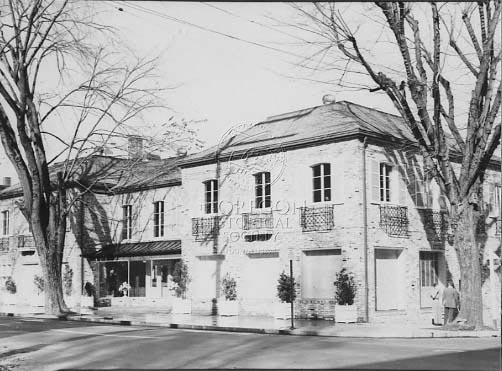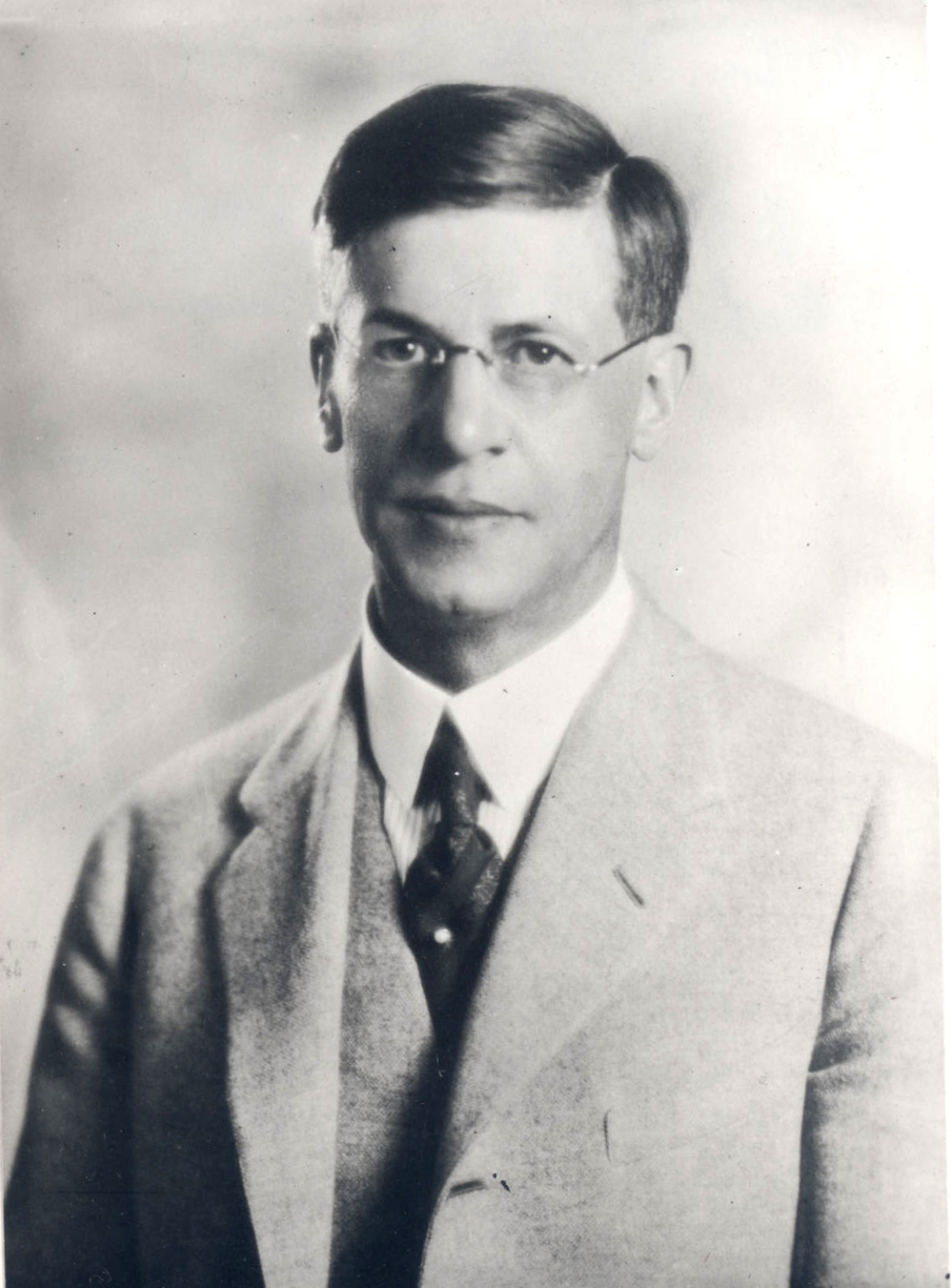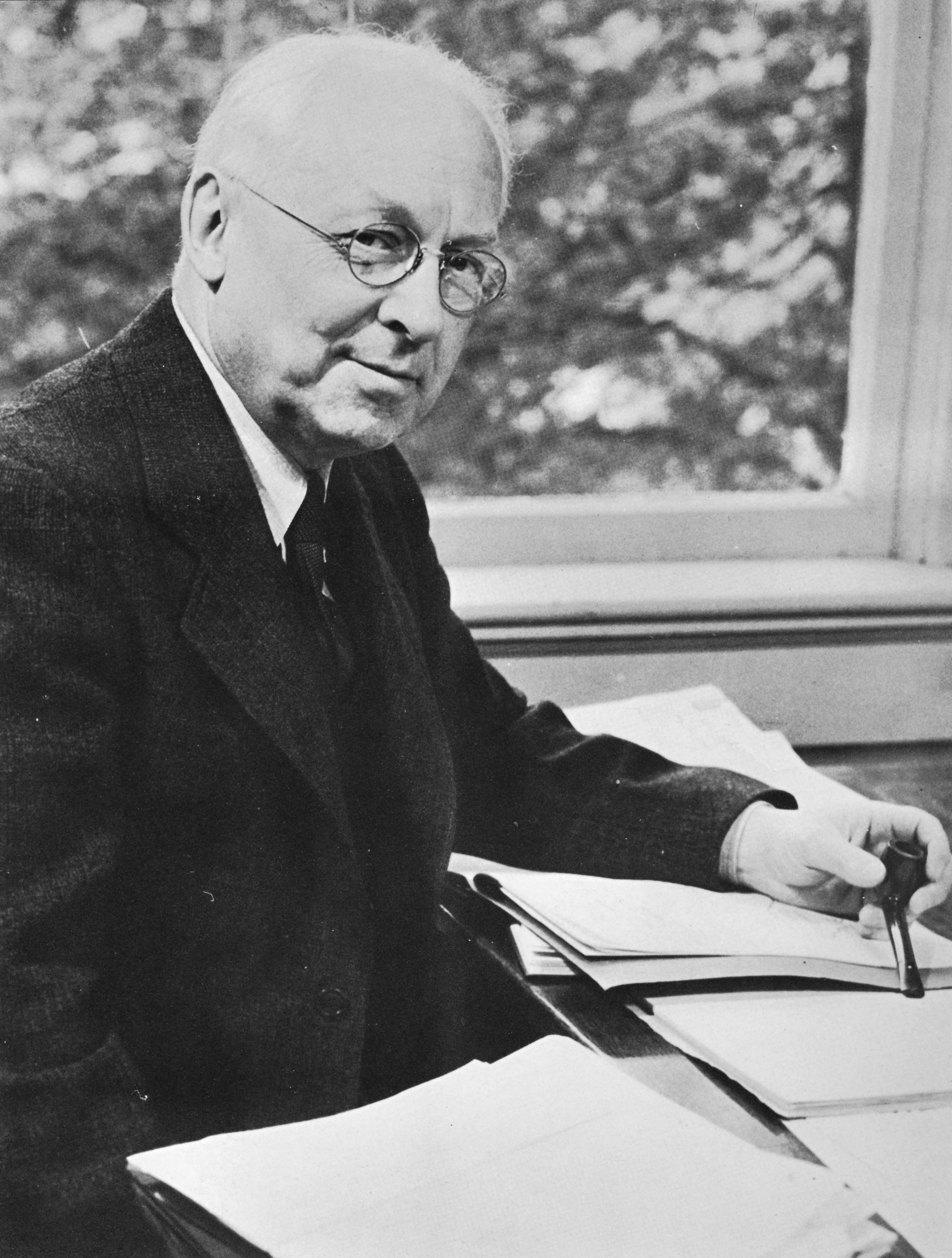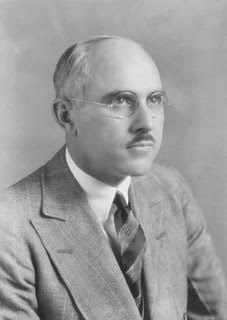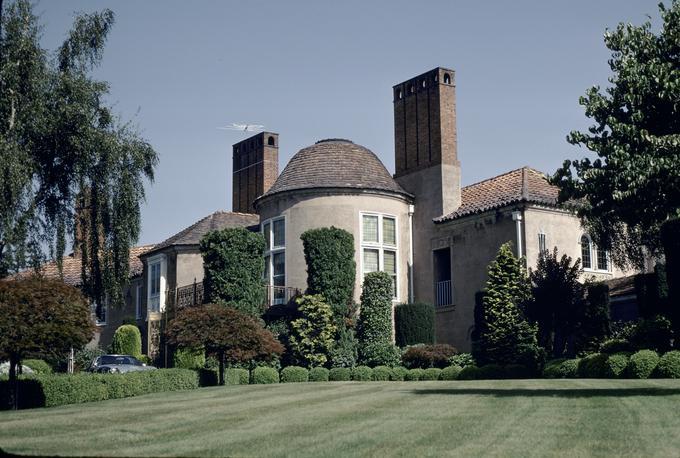Architect Roscoe De Leur Hemenway designed an estimated three hundred buildings. During his lifetime, he became one of the best-known residential architects in Portland.
Born in 1899 in Cottage Grove, Hemenway moved to Portland as a teenager and graduated from Washington High School. He attended the University of Oregon School of Architecture and Allied Arts, where his classmates included future architects Richard Sundeleaf and Glenn Stanton. Upon his graduation in 1922, he moved to Philadelphia, where he did post-graduate work at the University of Pennsylvania and briefly worked for the firm of Gilchrist and Yellin.
Hemenway returned to Portland in 1923, working with landscape architect George H. Otten before establishing his own practice. In 1926, he married Martha Huey Johnson, and the following year was his first as a licensed architect in Oregon.
Many architects working between World War I and World War II favored revival styles; and those who were academically trained, like Hemenway, were eager to demonstrate their ability to apply correct historic details to new buildings. Much of Hemenway’s work in the 1920s and 1930s was designing English Cottage and Tudor Revival homes. His designs showed a careful consideration of site, the integration of structure and landscape into the environment, and attention to detailed finishes. One of his most prominent designs during this period was a Tudor Revival residence for Roy and Leola Gangware at 4848 Southwest Humphrey Boulevard.
During the Great Depression, Hemenway joined a Historic American Buildings Survey field squad. Working with other architects, he surveyed structures across Oregon, with a focus on Classical Revival homes. In the late 1930s, his designs were featured frequently in local newspapers. Though he had been designing Colonial Revival residences from the earliest days of his career, his commissions in the 1940s and 1950s focused on that style. He became so associated with the style that, both during his lifetime and after, real estate listings advertised homes as “Hemenway colonials.”
Hemenway continued to design Colonial Revival houses long after his contemporaries began favoring more modern aesthetics such as Northwest Regionalism. He dabbled in the regional style as well as Modernistic architecture, but his clients continued to commission him to design Colonial Revival homes in exclusive neighborhoods in Portland. Perhaps the best-known concentration of Hemenway Colonials is in the Dunthorpe neighborhood, where he designed more than a dozen homes in the 1940s and 1950s, many constructed by builder W.C. Bauman. It was during this period that he produced what many consider to be his finest work, a 1950 residence for investor and civic leader Theodore B. Wilcox, Jr., at 2728 Southwest Greenway.
Though Hemenway designed buildings primarily in Portland, his work can be found elsewhere in Oregon as well as in Washington, California, and Virginia. In addition to single-family homes, he designed apartment buildings and commercial structures. His most notable commercial design was Young’s Gown Shop, at Southwest 10th Avenue and Montgomery Street. Constructed in 1956, its design was meant to emulate Parisian architecture of an earlier era. The building was demolished in 1969.
By the late 1950s, Hemenway’s health was in decline. Nevertheless, he continued to design until his death in 1959.
-
![The building was designed by Roscoe De Leur Hemenway and was demolished in 1969.]()
Young's Gown Shop at S.W. 10th & Montgomery, 1956.
The building was designed by Roscoe De Leur Hemenway and was demolished in 1969. Oregon Historical Society Research Library, Oregon Journal Collection, 006587
Related Entries
-
![Albert E. Doyle (1877-1928)]()
Albert E. Doyle (1877-1928)
Albert Ernest Doyle was one of Portland’s most successful early twentie…
-
![Ellis F. Lawrence (1879-1946)]()
Ellis F. Lawrence (1879-1946)
Portland architect Ellis Fuller Lawrence was the leading organizer of h…
-
![Folger Johnson (1882–1970)]()
Folger Johnson (1882–1970)
Architect Folger Johnson contributed to the cultural vitality of Portla…
-
![Herman Brookman (1891-1973)]()
Herman Brookman (1891-1973)
With a career that spanned more than fifty years, architect Herman Broo…
Map This on the Oregon History WayFinder
The Oregon History Wayfinder is an interactive map that identifies significant places, people, and events in Oregon history.
Further Reading
Hawkins, William J., III, and William F. Willingham. Classic Houses of Portland, Oregon, 1850-1950. Portland: Timber Press, 1999.
Ritz, Richard E. An Architect Looks at Downtown Portland. Portland: Greenhills Press, 1991.
Roscoe D. Hemenway Plans, Mss 3046, Oregon Historical Society Research Library.

